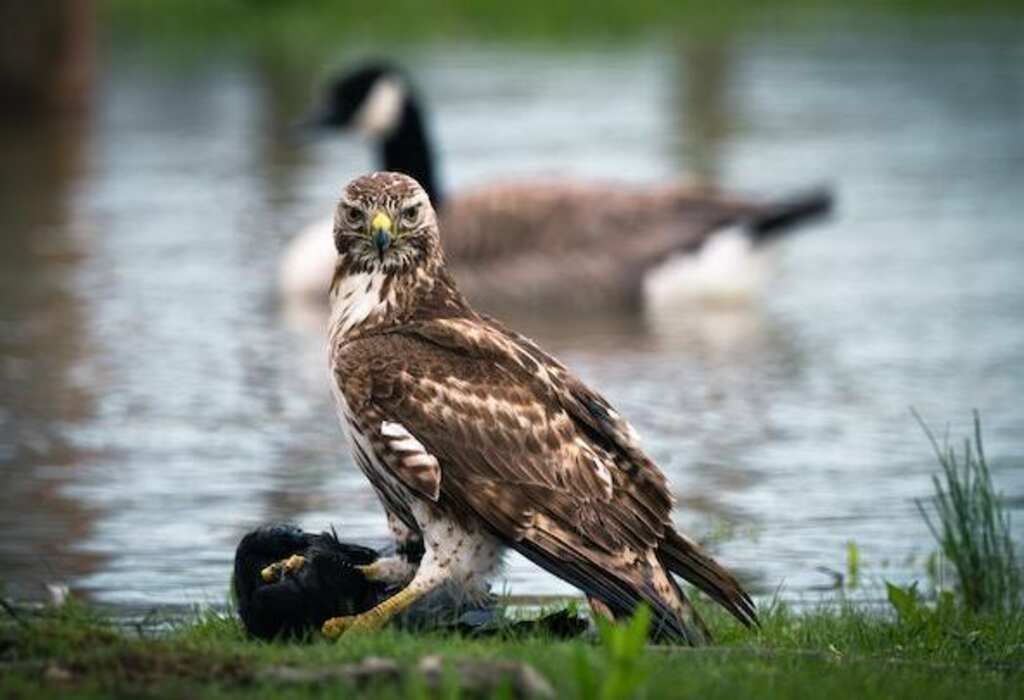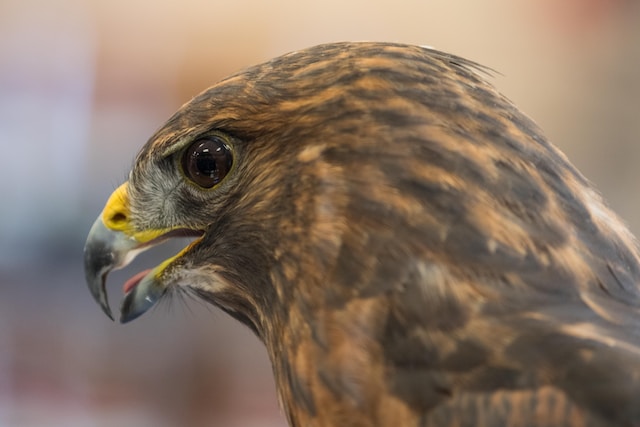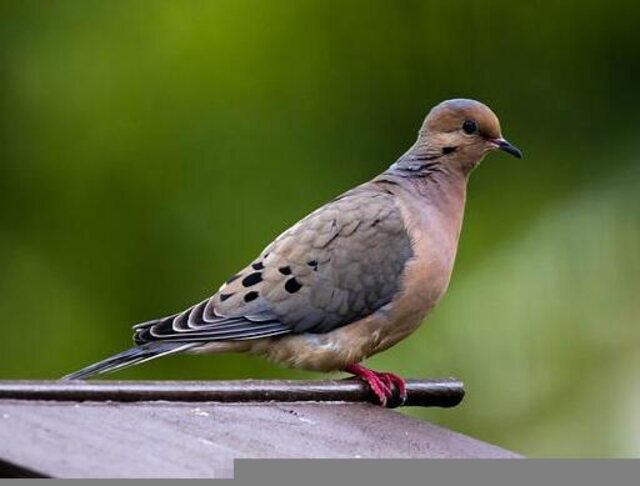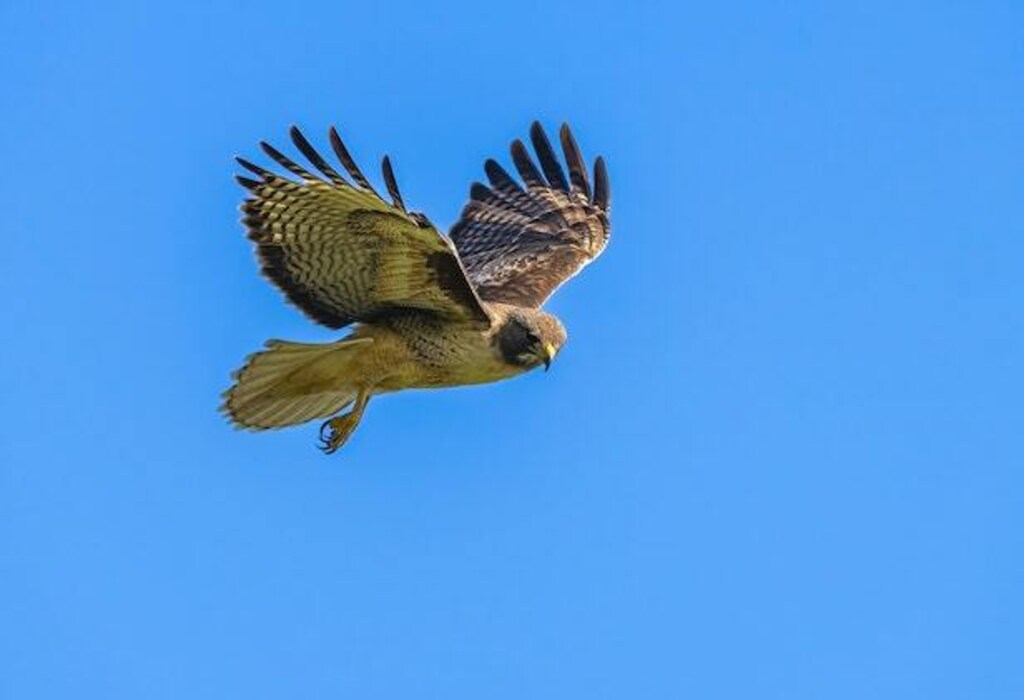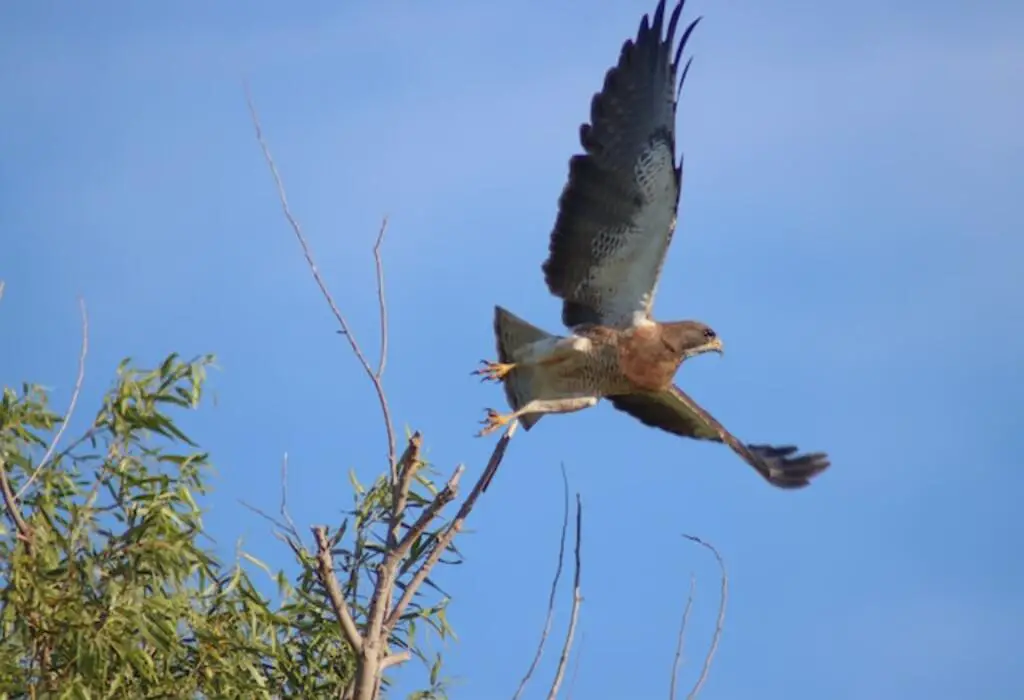Do Hawks Eat Doves? The age-old question that has puzzled bird enthusiasts and kept doves on high alert. Brace yourselves, folks, because we’re diving into the unseen battle of survival in the wild! The short answer? You bet! But there’s more to this feathered feud than meets the eye.
Join us as we unveil the secrets, share fascinating anecdotes, and explore the intriguing world of hawk-dove interactions. Get ready to spread your wings and uncover the truth!
Table of Contents
Explanation of Hawks and Doves
Hawks are birds of prey that belong to the Accipitridae family. These birds are known for their sharp talons, hooked beaks, and keen eyesight.
Hawks are considered apex predators within their ecosystems, meaning they occupy the top of the food chain.
Doves, on the other hand, are a type of bird belonging to the Columbidae family. These birds are often referred to as pigeons or rock doves.
They have plump bodies, small heads, and short necks. Unlike hawks that hunt for food aggressively and rapidly move through environments while hunting targets down; doves tend to be more passive creatures.
Brief Overview of Topic
The relationship between hawks and doves is a complex one that scientists have studied for years. This topic has been highly debated in both academic circles as well as among bird watchers globally- Do hawks eat doves? The answer is yes!
But how does this happen? What factors influence hawk-dove interactions?
And why is this important? This article will provide an in-depth look at hawks’ predatory behavior towards doves ranging from their hunting techniques to factors influencing their interactions in wild areas with doves populations present.
We will also explore how hawk predation affects dove populations while providing insights into ways such interactions impact ecosystems’ balance overall. Stay tuned!
The Savage Predator: Hawks
Description of hawks as predators
Hawks are part of the larger family of birds of prey, also known as raptors. These birds have long, sharp talons and hooked beaks that make them highly effective hunters.
Hawks are skilled predators with exceptional eyesight, enabling them to spot their prey from great distances.
Hawks are known for their incredible speed and agility, which allow them to catch their prey in mid-air while on the wing.
They are deadly hunters with an instinctual drive to capture and kill. With a wingspan ranging from 18 to 48 inches, hawks can easily soar through the sky in search of prey.
Types of hawks that prey on doves
Several species of hawks are known to hunt and kill doves. The Cooper’s Hawk is the most common hawk species that preys on doves due to its size and hunting style.
The Sharp-shinned Hawk is another species that preys heavily on doves but is smaller than the Cooper’s Hawk.
Other hawk species that occasionally hunt doves include Red-tailed Hawks, Red-shouldered Hawks, and Northern Goshawks.
The Cooper’s Hawk is a medium-sized hawk with a bluish-grey back and rusty red barring under its tail feathers.
It is known for its quick flight pattern through wooded areas where it catches unsuspecting doves in flight or perching nearby.
Sharp-shinned Hawks have similar colorings as Cooper’s Hawks but are smaller in size making them more agile in dense forests where they also hunt for small birds like mourning doves.
Hunting techniques used by hawks
Hawks use a variety of techniques when hunting their prey. Most commonly, they will perch high up in trees or other vantage points before swooping down onto their prey in a surprise attack.
Hawks have sharp talons and strong legs, which allow them to grab hold of their prey tightly.
They use their hooked beaks to break the neck or spine of their prey. In addition to ambush attacks, hawks are skilled at flying and hunting in open spaces.
They can fly low over fields or prairies and snatch up small prey like doves with ease. Hawks are also known to use diversionary tactics when hunting.
For example, a hawk may pretend to fly away from its intended target before making a sharp turn and grabbing the bird by surprise.
Overall, hawks are highly skilled predators that use a variety of techniques when hunting their prey, including speed, agility, and clever diversionary tactics.
Doves: The Prey
Description of doves as prey for hawks
Doves are commonly known as peaceful and harmless birds. They have a medium-sized body, ranging from 9 to 13 inches in length, and weigh around 4 to 8 ounces. These birds are popularly hunted by hawks due to their size and availability.
Doves are found in various habitats, including forests, fields, and urban areas, making them an easy target for predators.
In addition to being abundant in the wild, doves have a few characteristics that make them an attractive prey for hawks.
One of these is their flight pattern. Doves have a distinctive flight pattern that makes them easy for predators like hawks to spot.
They tend to fly in a straight line with quick flapping motions rather than gliding or soaring like other birds. Another characteristic that makes doves attractive prey is their behavior when threatened.
When attacked by predators like hawks or falcons, doves often freeze instead of fleeing or fighting back. This behavior makes it easier for the predator to catch its prey.
Characteristics that make doves vulnerable to hawk attacks
Hawks have evolved specific hunting techniques that take advantage of the vulnerabilities of their prey animals like doves.
One such technique is called stooping – where a hawk dives sharply from high altitude towards its target (prey) on the ground at great speed before snatching it up with its talons.
Doves’ small size also makes them vulnerable targets for hawks because they can easily be overpowered and carried off by these predators.
Unlike larger animals such as rabbits or deer which can put up resistance against an attack by predators such as wolves or coyotes due to their size and strength; doves cannot fend off attacks from raptors.
Other factors that make doves vulnerable include their feeding habits. Doves are known to feed on the ground, making them less aware of approaching predators.
They also tend to feed in open spaces where there is little or no cover, making it easier for hawks to spot them and swoop down for an attack.
Doves are some of the most common prey for hawks due to their size, abundance, and behavior.
Their unique flight patterns and vulnerability to predator attacks make them an easy target for predators like hawks.
However, despite being hunted by these predators frequently, doves still play a significant role in maintaining ecological balance.
Hawk-Dove Interactions in the Wild
Common Scenarios where a Hawk would Hunt a Dove
The main reason hawks hunt doves is for food. Hawks are carnivorous birds that prey on small animals such as rabbits, rodents, and songbirds.
Doves are no exception and can be found on the menu of several hawk species.
The most common scenario where a hawk would hunt a dove is when they spot a dove foraging for seeds or drinking water in an open area.
Hawks usually target doves that are alone since they are easier to catch than those that are flocking together. Another scenario where hawks hunt doves is during the nesting season.
Doves build their nests in open areas such as trees, bushes, and roofs of houses, making them easy targets for hawks looking for food for their young ones.
Hawks usually attack the nestling or fledgling doves when their parents leave the nest to look for food.
Factors that Influence Hawk-Dove Interactions in the Wild
Several factors influence hawk-dove interactions in the wild, including habitat type, weather conditions, population density of both species, and human activities.
Habitat type determines how much cover is available to doves and how well hawks can hide while searching for prey.
Open habitats with little vegetation coverage favor hawk predation since it’s easier to spot prey from afar. Weather conditions also play a crucial role in determining hawk-dove interactions in the wild.
For instance, during periods of high wind speeds or heavy rainfall, hawks might find it challenging to locate prey due to limited visibility or difficulty maneuvering through strong winds.
Population density of both species also plays an important role in determining how often hawks will interact with doves.
High densities of both predators and prey increase opportunities for interactions between them while low densities reduce encounters between them.
Human activities such as urbanization, habitat destruction, and use of pesticides can also affect hawk-dove interactions.
For instance, if doves’ natural habitats are destroyed or fragmented by human activities, it might make it easier for hawks to locate and hunt them.
Similarly, the use of pesticides can reduce the population densities of insects that doves feed on, making doves more vulnerable to hawk attacks.
Impact on Ecosystems and Populations
How hawk predation affects dove populations
Hawk predation is a natural phenomenon in which hawks hunt their prey, including doves. Hawk attacks can significantly impact dove populations in an ecosystem, especially if hawks are present in greater numbers or if there is a reduced number of the dove population.
Studies have shown that when hawk populations are high, doves tend to have low population numbers.
This is because hawks rely heavily on doves as a source of food and hunt them to maintain their own survival. As a result, dove populations can be drastically reduced by hawk predation.
However, it should be noted that hawk predation does not necessarily lead to the extinction of dove populations.
Doves have various defense mechanisms such as flocking behavior and hiding in vegetation or trees when threatened by predators like hawks.
Role of hawks in maintaining balance in ecosystems
Despite the potential negative impact on dove populations, hawks play a crucial role in maintaining balance in ecosystems.
Hawks are apex predators and sit at the top of the food chain where they control the population size of their prey species, including doves.
Without predator-prey interactions, ecosystems can become unbalanced causing an overpopulation or underpopulation of certain species.
This can lead to negative effects such as overgrazing or overconsumption of resources.
Therefore, predators like hawks ensure that prey populations remain at healthy levels and keep ecosystems stable.
Furthermore, studies suggest that removing apex predators like hawks from an ecosystem could lead to trophic cascades- a phenomenon where changes at one trophic level (such as removal or addition) cause cascading effects throughout other levels resulting in ecological imbalance- which would ultimately affect other organisms within that ecosystem.
While hawk predation may negatively affect dove populations within an ecosystem, it is important to recognize the role that hawks play in maintaining a balanced ecosystem.
The presence of apex predators like hawks is essential for ensuring that prey populations remain at healthy levels, which ultimately contributes to the overall health and stability of ecosystems.
Conclusion
Summary of Key Points
Hawks are known for their hunting skills and doves are one of their common prey. Many species of hawks, including Cooper’s Hawks, Sharp-shinned Hawks, and Red-tailed Hawks hunt doves as part of their natural diet.
Doves are vulnerable to hawk attacks because they typically fly at low altitudes and have limited mobility in the air.
In the wild, hawk-dove interactions are influenced by various factors such as habitat, food availability, weather conditions, and human activities.
Hawks play an important role in maintaining balance in ecosystems by controlling dove populations.
The presence of hawks prevents doves from overpopulating an area which can result in resource depletion and competition for nesting sites.
Additionally, hawks help to maintain healthy dove populations by preying on weak and sick individuals.
Final Thoughts on the Topic
The relationship between hawks and doves is fascinating and complex. While it may seem harsh that hawks prey on doves, it is important to remember that this is a natural part of the food chain.
As predators, hawks help to control populations which ultimately benefits the entire ecosystem. It is also important to note that humans can have a significant impact on hawk-dove interactions.
Habitat destruction, hunting/harassment by humans or pets, pesticide use can all affect both hawk and dove populations.
Thus conservation efforts should be made to ensure that these birds continue to thrive in our environment.
While it may seem brutal for some people to witness a hawk hunting a dove; this process plays an essential role in ecosystems around us.
The relationship between predator (hawk) and prey (dove) needs balance so we can ensure that these creatures continue coexisting peacefully within our environment without risking any destabilization or harm caused due to imbalances occurring over time.
FAQs: Do Hawks Eat Doves?
Do Hawks really eat doves?
Yes, hawks do eat doves. Hawks are skilled predators and doves make for a tasty meal due to their size and availability.
Why do hawks target doves?
Hawks target doves because they are easily spotted and vulnerable. Doves’ flight patterns and behavior when threatened, such as freezing instead of fleeing, make them an attractive prey for hawks.
Which hawk species are known to prey on doves?
Several hawk species hunt and kill doves, including Cooper’s Hawks, Sharp-shinned Hawks, Red-tailed Hawks, Red-shouldered Hawks, Northern Goshawks, and Peregrine Falcons.
How do hawks hunt doves?
Hawks employ various hunting techniques. They perch in elevated positions and swoop down on their unsuspecting prey. Hawks also utilize speed, agility, and diversionary tactics to catch doves mid-air or on the ground.
What factors influence hawk-dove interactions?
Hawk-dove interactions are influenced by habitat type, weather conditions, population density of both species, and human activities. Factors such as cover availability, prey visibility, and habitat destruction can affect the frequency of these interactions.

